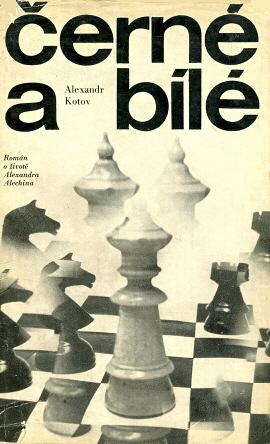
When contacting us by e-mail, correspondents are asked to include their name and full postal address and, when providing information, to quote exact book and magazine sources. The word ‘chess’ needs to appear in the subject-line or in the message itself.
| First column | << previous | Archives [42] | next >> | Current column |
From Yasser Seirawan (Amsterdam):
‘I am currently writing a romance/adventure novel which features a chess theme. It was originally written in 1980 and 1981, but a baggage mishap during a flight to Berlin caused me to lose my only (handwritten) copy. Laptops did not exist in those days. Now, half a lifetime later, I have revived the project. How many grandmasters have written a novel?’
Two works come to mind: Belye i chernye by A. Kotov (Moscow, 1965) and Los Voraces 2019 by A. Soltis (Jefferson, 2004). Regarding the former, which concerned Alekhine’s life, see C.N. 4073 for information about the ensuing film. The dust-jacket of the Czech translation of the novel (Prague, 1971) is reproduced below:

Hans-Georg Kleinhenz (Munich, Germany) writes:
‘A predecessor of the famous “every schoolboy knows” quote can be found in the Carlsbad, 1907 tournament book (page 287), where Georg Marco comments on the opening moves of Leonhardt v Wolf:
“Die bisherigen Züge sind jedem A-B-C-Schützen [a pupil in the earliest class at school, who is learning the alphabet] aus dem kleinen Dufresne bekannt.”’
We note that the English-language edition of the tournament book (Yorklyn, 2007) has a curious mistranslation:
‘These moves have been known to every beginner since the days of the young Dufresne.’
The phrase ‘kleinen Dufresne’ (‘little Dufresne’) has nothing to do with Dufresne’s age (or size). Marco was stating that the opening moves of Leonhardt v Wolf were well-known owing to their inclusion in Dufresne’s ‘little’ introductory manual (Kleines Lehrbuch des Schachspiels).
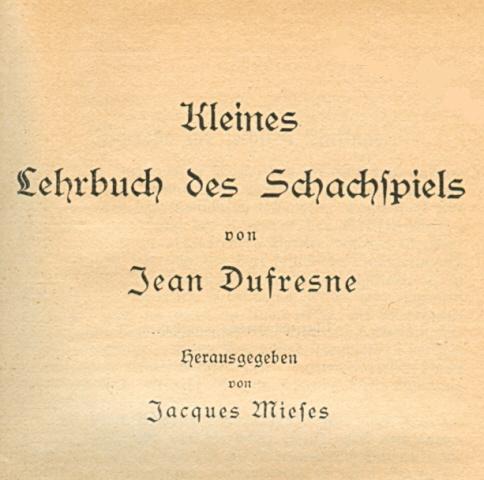
Information is still being sought on a position ‘won by Leonard Walls’, from page 483 of the Social Chess Quarterly, January 1935 (see page 2 of Chess Explorations):
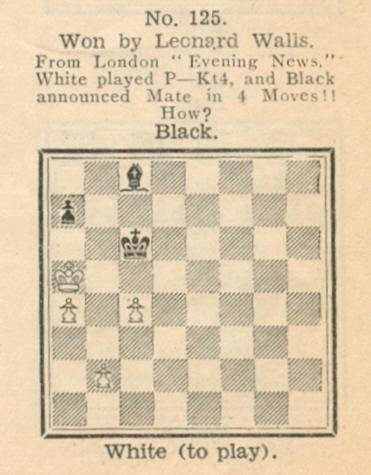
The mate in four for Black, after 1 b4, is 1...Bb7 2 c5 Bc8 3 b5+ Kxc5 4 b6 axb6 mate. Or 2 b5+ Kc5 3 b6 axb6 mate.
The following article by the Badmaster, G.H. Diggle (1902-93), was originally published in the January 1986 Newsflash – see also page 34 of volume two of Chess Characters (Geneva, 1987):
‘Since the Government’s rejection of the Church of England’s report on the state of the nation, “rubbishing” is all the rage. The irascible BM, determined to be “with it”, glowered through the December Newsflash (which arrived by the same post as his Electricity Bill) to see what he could “rubbish”. He had to go no further than the Editorial, which exhorts us all (after our Silver Olympiad and Bronze World Test Medals) to “sit back over Christmas and enjoy it, if you remember the days of no Grandmasters”.
The BM, a confirmed Chess Luddite, as cheerful at Christmas as Gabriel Grub, not only remembers, but glories in, the days of no British Grandmasters, and indeed no Grandmasters at all. Capablanca was known as Capablanca, and not belittled by having ponderous prefixes tacked on to his illustrious name, or by every masterpiece he produced being dubbed “a true grandmaster game”. And Reshevsky was Reshevsky, though there was one commentator who used to croon about him in this manner: “See, Sammy’s king arrives just in time. What a master of technique is Sammy! Now the stage is set. Soon the rook’s pawn will advance. A grandmaster ending indeed. Is he not a rare technician?”
Slowly but surely during the last 50 years, Grading, Grandmasters and now the invasion of huge weekend Tournaments over our land have ruined the English Chess Countryside, where players like the BM once enjoyed immense and undisturbed rustic renown (ensured by standing drinks from time to time to the Editor of the local rag). When the BM won the Lincolnshire Championship (at the fifth attempt) such was his repute amongst his townsmen (population 4,000) that he actually gave a “simul” as a sideshow at a charitable fête. Fourteen “victims” offered themselves for slaughter – equally surprisingly, 14 chess sets were raked up too – some of them not very favourable to the development of the Champion’s powers, being great red and white “Bone-Henges” with the fatter pieces bulging against each other like overhanging Elizabethan houses in a narrow street. Even then, by a superhuman effort, he scored +10 –2 =2 in three hours and can give excellent reasons for his two defeats – in one case, he never recovered after losing four pieces in two moves, discovering too late (and chivalrously keeping quiet about it) that his opponent (a most estimable lady music teacher) was quite innocently playing too many crotchets in a bar – in short, moving when the maestro arrived and again when he departed.
But today Arcadia is not left to enjoy its chess in its own way. We must all try to be Grandmasters, though (as chess officialdom admits) there are already too many of them, and if one of them is pointed out in the street no-one turns round to look. Their deportment, indeed, is often deplorable – the other day one of them actually won a Tournament playing horizontally, and crawling about the arena like the Serpent in the Garden. Staunton and Löwenthal would have fainted away at the sight. Let the BM’s message for 1986 be: “Grandmasters must go! Long Live Bad Chess, and Up the Chess Proletariat!”’
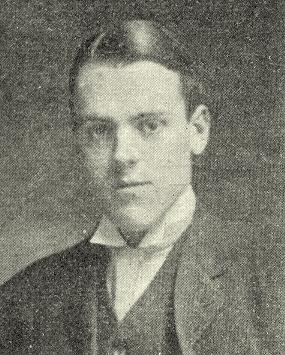
This is the problemist Murray Marble (1885-1919) of Worcester, MA, USA. The photograph was published on page 60 of the March 1910 American Chess Bulletin.
The name Alfred Maurice (Freddy) Reilly is seldom recalled nowadays, yet his service to chess was considerable. He was the son of Brian Reilly (both appeared with Alekhine in a mid-1930s photograph taken in A.M.R.’s native city, Nice – see page 123 of the April 1974 BCM), and the Reillys’ joint editorship/production of the BCM ran from 1971 until A.M.R. died, aged 50, in 1980. He had previously been the editor of Ski and Skate and was the author of Skiing A Beginner’s Guide (London, 1970). His most notable chess writing was an article of magnificent length and quality, ‘Our First Hundred Years 1881-1980’, published posthumously on pages 593-626 of the December 1980 BCM.

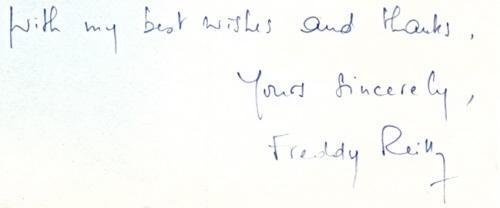
Specimens of A.M.R.’s signature,
on letters to us in the 1970s
His obituary (by Harry Golombek) on pages 424-425 of the August 1980 BCM placed particular stress on his production know-how, which had permitted a great increase in the magazine’s size:
‘The professional skill with which this was accomplished was a marvel to behold. With a quiet, unassuming yet persistent force that assumed heroic proportions Freddy accomplish[ed] every month a miracle of production at which I never ceased to wonder.’
We have before us an article, ‘Set and Match’, on page 20 of Reproduction, June 1974. Subtitled ‘How the leading monthly chess magazine is written and set for press by one man’, it reported, together with much technical detail for its specialized readership, that ‘using two rooms of a Victorian house in south London as office, composing department, paste-up department and photographic studio, Fred Reilly edits, sets and pastes up every page of every issue of the monthly British Chess Magazine ...’
An impressive achievement indeed. It is easily forgotten today how great the BCM was in the 1970s.
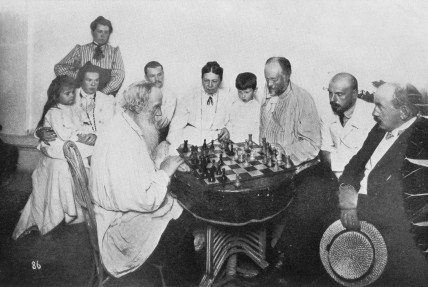
The above photograph was given in our feature article Tolstoy and Chess. Jan Kalendovský (Brno, Czech Republic) points out this similar shot:
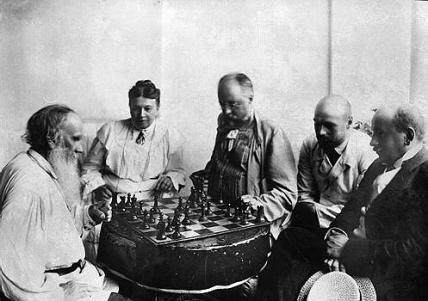
Near-identical twins are always of interest. C.N. 3351 presented a photograph (New York, 1924) from Homenaje a José Raúl Capablanca (Havana, 1943):
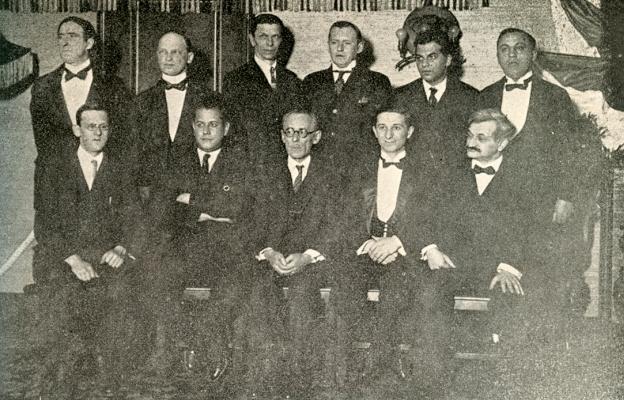
Our comment was: ‘Any reader who thinks that we are merely reproducing a famous shot is invited to look more closely.’
Another instance concerns Carlsbad, 1929. The familiar group picture appears on, for example, page 97 of A Picture History of Chess by Fred Wilson (New York, 1981), but it is not quite the same as the one on page 289 of David DeLucia’s new book (C.N. 5323).
Wanted: unusual inscriptions by chess authors in their books. An example from our collection is in The Chess Mysteries of Sherlock Holmes by Raymond Smullyan (New York, 1979):
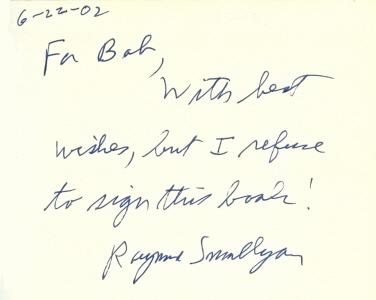
A volume especially rich in chess-related matter is The Mystery to a Solution (subtitled ‘Poe, Borges, and the Analytic Detective Story’) by John T. Irwin (Baltimore and London, 1994). Chess has 46 references in the index, and the illustrations include a photograph of the author in play against Jorge Luis Borges in 1983. On page xxiii Professor Irwin writes:
‘... this book is in part a product of the form of design called chance. Almost 30 years ago in June 1965, when I was an ensign in the Navy stationed in Hawaii and working in cryptography, I played in a weekend chess tournament, the Oahu Championship. In the fourth round I was paired against a player named Fred Borges. ... The game that followed (a Morra Gambit in the Sicilian Defense) was the best chess game I have ever played in my life, involving at one point an eight-move combination to secure the positional advantage of a rook on the seventh rank. ... [The game] made such a lasting impression that it indelibly linked the name Borges to the game of chess in my mind. Some 15 years later when I began re-reading Borges with the idea of teaching his fiction, that associative link resurfaced, attracting my attention to the line in Borges’s first detective story, “In a guessing game to which the answer is chess, which word is the only one prohibited?” It was the following up of that thread that led me to this book, indeed, led me through a maze to a different chess game with another Borges.’
From an endnote on page 453:
John T. Irwin – Fred Borges1 e4 c5 2 Nf3 d6 3 d4 cxd4 4 c3 dxc3 5 Nxc3 Nc6 6 Bc4 e6 7 O-O Be7 8 Bf4 Nf6 9 Qe2 O-O 10 Rfd1 Ne8 11 Rac1 a6 12 a4 Bd7 13 Rc2 Qc7 14 Rcd2 Rd8 15 e5 d5
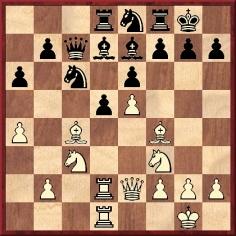
16 Bxd5 exd5 17 Nxd5 Qa5 18 Nxe7+ Nxe7 19 Rxd7 Rxd7 20 Rxd7 Ng6 21 Bd2 Qxa4 22 e6 Kh8 23 Rxf7 Qa1+ 24 Be1 Rg8 25 Ng5 h6 26 Rxb7 Nf6 27 Nf7+ Kh7 28 g3 Rc8 29 Kg2 Rc1 30 Bc3 Nd5 31 Ng5+ Kg8 32 Rxg7+ Kf8 33 e7+ Ngxe7 34 Qf3+ Ke8 35 Qf7+ Kd7 36 Qe6+ Kc7 37 Rxe7+ Nxe7 38 Qxe7+ Kc6 39 Qe6+ Kb5 40 Qd5+ Kb6 41 Bd4+ Kc7 42 Ne6+ Kc8 43 Qd8+ Kb7 44 Qd7+ Ka8 45 Qa7 mate. (‘Black kept playing after move 34 when his position was clearly lost because White might have forfeited the game on time before being able to enforce checkmate.’ Our computer check indicates a few faster wins for White.)
Page 260 of the September 1965 Chess Review reported that the tournament was won ‘with a 5-0 shut-out’ by Tibor Weinberger. ‘Ross Sprague and John Irwin each tallied 4-1, with Sprague getting the nod for second on a tie-break. Eighteen players participated.’
Stéphane Pilawski (Liège, Belgium) writes:
‘An interesting (and sometimes frustrating) aspect of chess books lies in the differences that may be found from one publisher to another or from one edition to another (even from the same publisher). A case in point is the recent book by Garry Kasparov, How Life Imitates Chess. I bought, and enjoyed, the French edition, La vie est une partie d’échecs (Paris, 2007), and later noted that two English-language versions exist, from Heinemann, London and Bloomsbury, New York.
After reading the Bloomsbury edition, I remembered that some ideas and stories that I had seen in the French edition were simply missing, so I took a closer look at both books and found that entire passages had been left out from one edition to the other.
Specifically, at the end of each chapter in the French edition Kasparov gave a few anecdotes, highlights, quotations and characteristics regarding the chessplayers he had mentioned in the chapter or about other people whom he admires. That material does not exist in the Bloomsbury edition.’
Of the two English-language editions (hereafter referred to as ‘Heinemann’ and ‘Bloomsbury’ respectively), only the former has the (rather perfunctory) material to which our correspondent refers. Overall, the Bloomsbury edition seems breezier, tighter and more accurate, yet it is the longer Heinemann volume that lacks an index. If different publishers in different countries demand different content, there is little an author can do about it, but the textual variations, however large or small, mean that anyone quoting from the book has a choice of editions and needs to avoid confusion and the suspicion of misquotation.
The principal weakness of How Life Imitates Chess relates to its own use of quotes, and in the present item we plan to concentrate on that aspect in some detail. As intimated above, quotes are particularly numerous in Heinemann, with sets of four on some pages.
The heading to chapter 5 of Heinemann on page 53 (page 48, chapter 4 in the case of Bloomsbury) professes to cite Capablanca: ‘I see only one move ahead, but it is always the correct one.’ No source is given, of course, because none is known (see, for instance, the discussion in C.N. 4483), and that of itself should have resulted in the quote being expunged. Are there not enough authenticated chess observations to choose from?
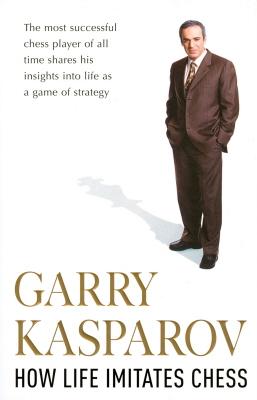
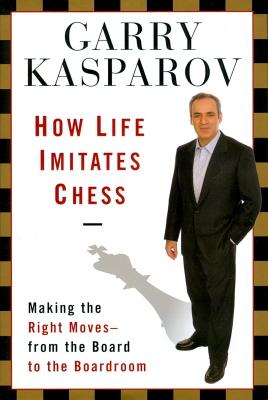
Heinemann and Bloomsbury
An example of an outright error comes on page 151 of Heinemann (with an almost identical wording on page 119 of Bloomsbury):
‘The Austrian Rudolf Spielmann wrote that we must “play the opening like a book, the middlegame like a magician, and the endgame like a machine”.’
C.N. 4156 showed that this remark pre-dates Spielmann:
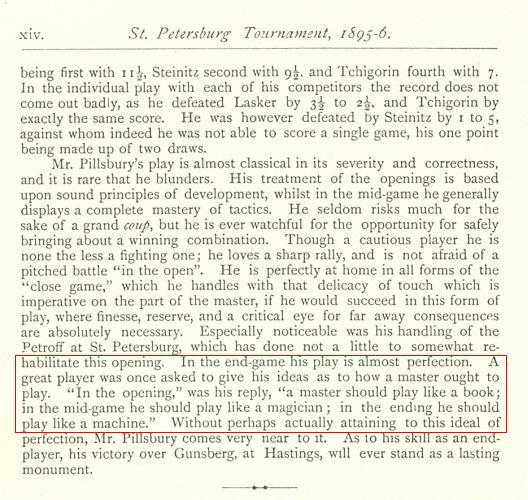
The Games in the St Petersburg Tournament 1895-96 by J. Mason and W.H.K. Pollock (Leeds, 1896)
Or again, from page 171 of Heinemann:
‘A concept related to the initiative was elucidated elegantly by Aarton [sic] Nimzowitsch, who wrote that “the threat is stronger than the execution”.’
On page 125 of Bloomsbury the master is fortunately mentioned only by his surname, but both editions disregard the fact that the saying was already known in the nineteenth century (from both Eisenbach and Mason). See A Nimzowitsch Story.
Kasparov’s output is naturally not alone in such defective handling of other people’s remarks (far from it), but in a high-profile book he could have been expected to give a lead. If the Heinemann edition cannot even run to an index, that publisher is unlikely to want an appendix with sources or, perish the thought, footnotes specifying the provenance of quotes. But why not cite only what is known to be genuine? Inaccurate quotation sits particularly poorly in a book about self-awareness and self-improvement written by an author in whom the misquotation defect has been pointed out, on and off, for over two decades. Such negligence drags everything down, yet, with a little research, the offending cases in How Life Imitates Chess (or, at least, Bloomsbury, which has far fewer unattributed quotes than does Heinemann) could have been largely rectified within the time required for a single book-signing expedition.
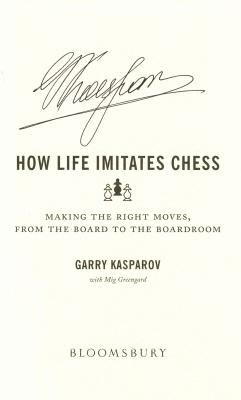
Turning again to the textual differences between the two editions, we note a minor one on a major issue. It will be recalled that Kasparov has several times condemned, with hindsight, his decision to break away from FIDE. He does so once more in this book, and both editions state:
‘This turned out to be a terrible blunder, the worst of my career.’ (Heinemann, page 115; Bloomsbury, page 107.)
There is, though, a slight difference in the introductory comment. From page 114 of Heinemann:
‘In 1993 I committed the fatal mistake of launching an attack from a position of weakness.’
On page 106 of Bloomsbury ‘fatal’ becomes ‘dreadful’. For what
purpose?
In contrast, a truly significant divergence between the two editions relates to another Kasparovian peccavi. On pages 184-185 of Heinemann he accepts that he was justifiably criticized for volume one in his Predecessors series, thereby gratifyingly pulling the rug from under those unqualified commentators who pronounced it a masterpiece. (It somehow even received the British Chess Federation’s ‘book of the year award’ in 2003.) Kasparov’s entire confession is, unfortunately, absent from Bloomsbury.
Of course, such mea/nostra culpa admissions by Kasparov have been seen before, and notably concerning the defects of his autobiography Child of Change (London, 1987). Initially, that book too was lauded by nescient toadies, but the wind departed from their sails when Kasparov conceded, ‘I deserved the critical reception of Child of Change’ and ‘I was too light-hearted, I did it just in between, which was very bad’. He promised that an amended edition (Unlimited Challenge) would be better, but that hardly proved the case. So when now (on page 184 of Heinemann, but nowhere in Bloomsbury) Kasparov admits to, inter alia, ‘editorial haste’ regarding the first Predecessors volume (particularly in the analysis), it is a welcome avowal, but one to be treated with caution. The real test should come later this year with his book on ‘Kasparov v Karpov 1975-1985’. To what extent will it contain a belated amende honorable for his brash (to use no stronger adjective) misstatements in the 1980s on the Termination?
The present item has focussed on the weakest aspects of How
Life Imitates Chess, but we are by no means blind to the
book’s qualities. It is, for the most part, well written and
bright, and the Heinemann and Bloomsbury volumes both have, in
their different ways, plenty to commend them. What is really
required now, however, is a third edition, with more editorial
rigour.
Joost van Winsen (Silvolde, the Netherlands) sends the following from the Canadian publication the Western Advertiser, 27 December 1875:
‘Mr Bird, the eminent English chessplayer, is by profession a railway accountant. He has been in this country several times before the present visit. In 1860 he was in Canada, as a junior partner of Coleman, Turquand, Young & Co., London accountants, and was engaged on the accounts of the Great Western Railroad of Canada, and afterward on the New York Central. In 1865 he again came to America for the same firm, and spent some months amalgamating the books and preparing reports on the Atlantic and Great Western but retired on account of differences which arose in London as to the extent of information and mode of stating the traffic and accounts and the requirements of that road.’
Our correspondent comments:
‘Bird’s “present visit” to America, from 1875 to 1877, is well known. For instance, he played a match with James Mason, participated in the Café International Tournament of 1876 in New York, was a contestant in the Fourth American Chess Congress of 1876 in Philadelphia and the same year attended the Clipper Free Centennial Tournament in New York.
The other two visits – in 1860 and 1865 – are less familiar (of course, Bird also left England for America in 1889 to compete in the Sixth American Chess Congress).’
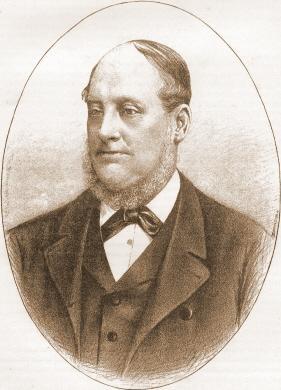
Henry Edward Bird
Mr van Winsen also submits the following game, played at the New York Chess Club and published in the Philadelphia Evening Bulletin of 24 February 1866:
George Henry Mackenzie – Henry Edward Bird1 e4 e5 2 Nf3 Nc6 3 Bc4 Bc5 4 b4 Bxb4 5 c3 Bc5 6 O-O d6 7 d4 exd4 8 cxd4 Bb6 9 Nc3 Na5 10 Bd3 Ne7 11 h3 O-O 12 d5 Ng6 13 Qc2 c5 14 Kh2 c4 15 Be2 Ne5 16 Nxe5 dxe5 17 f4 Bd4 18 fxe5 Bxe5+ 19 Bf4 Bxf4+ 20 Rxf4 Qc7 21 g3 Bd7 22 Raf1 b5 23 Bd1 Rae8 24 Qf2 Qb6 25 Qf3 f5 26 Bc2 b4 27 Ne2 b3 28 axb3 cxb3 29 Bd3

29...g5 30 Qh5 gxf4 31 gxf4 Kh8 32 e5 Bb5 33 Bxf5 Rxf5 34 Qxf5 Qg6 35 Qxg6 hxg6 36 Re1 Bxe2 37 Rxe2 Nc4 38 d6 Rb8 39 Re1 Kg7 and wins.
‘Are any more games known from Bird’s first two visits to America, and especially from the 1860 one?’, asks Mr van Winsen.
This photograph of V. Smyslov, A. Rueb, M. Euwe and L. Szabó at the 1956 Candidates’ tournament in the Netherlands is taken from page 161 of the May 1956 issue of Ajedrez (Buenos Aires):
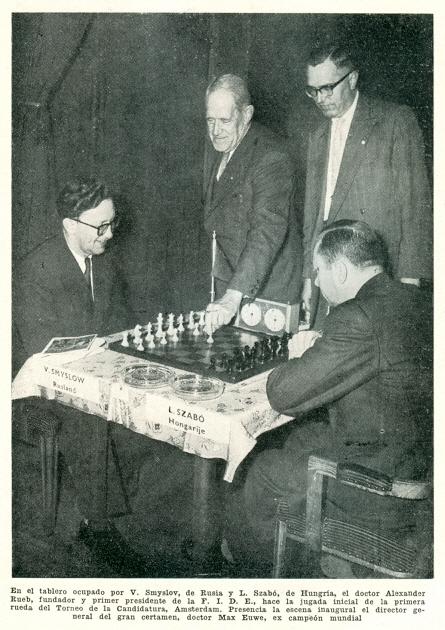
From Rod Edwards (Victoria, BC, Canada):
‘Regarding C.N. 4325 and previous items on woodpushers, woodshifters, etc., I have come across an early version of a similar term, although not as old as the eighteenth-century quote from Diderot. Page 162 of Etienne Cornil’s treatise on the Café de la Régence (C.N. 5241) gives the first page of a play, “Mat” by Charles Joliet, in which there was a character named Poussebois, a chessplayer.’
Below is the first page of the play, as published on pages 225-232 of La Stratégie, 15 August 1883:
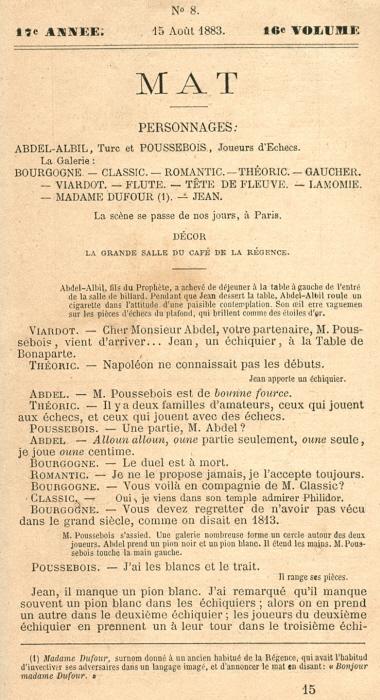
The text can also be found in the Traité-manuel des échecs by Henri Delaire (e.g. on pages 188-198 of the Paris, 1917 edition). The obituary of Charles Joliet (1832-1910) on page 64 of the February 1910 issue of La Stratégie showed that he was a prolific literary figure.
Michael Clapham (Ipswich, England) writes:
‘The advertisement leaf at the back of Bird’s Modern Chess and Chess Masterpieces (London, 1887) includes an advertisement for “H.E. Bird’ s Chessmen”, which were “considered a great improvement on Staunton’s design”. What do these pieces look like, and in what ways were they considered an improvement?’

Hans-Georg Kleinhenz (Munich, Germany) comments that column 629 of Philo-lexikon: Handbuch des jüdischen Wissens by Emanuel Bin-Gorion (Berlin, 1935) had a reference to ‘Hermann Keidanski (1865-1935)’. The same information was still appearing in, for instance, the 1971 edition of that reference book, Lexikon des Judentums by John F. Oppenheimer:
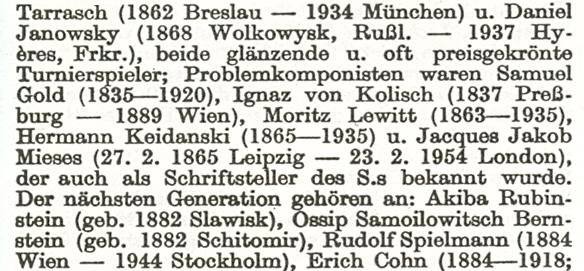
The book’s list of chessplayers (columns 696-697) contained various errors, such as ‘Daniel’ Janowsky (whose year of death was ten years out) and, for Rudolf Spielmann, incorrect years of birth and death.
Christian Sánchez (Rosario, Argentina) draws attention to an item on page 548 of the Anglo-American Magazine, November 1853:
‘The following game was published a few years since as being the briefest on record, and occurred in actual play at the Café de la Régence in Paris ...’
The moves were 1 e4 e5 2 Qh5 f6 (This being an illegal move,
Black was obliged to move his king instead.) 3 Qxe5 mate. The
players were identified only as X and Y.
We should welcome further information on that game and other occurrences of a penalty move with the king. The best-known case was related by Irving Chernev on page 119 of Wonders and Curiosities of Chess (New York, 1974):
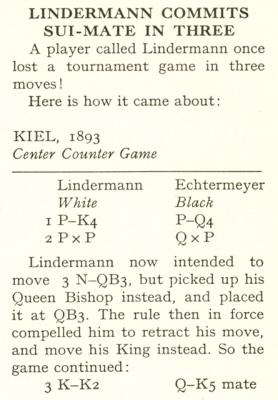
In chess lore, however, even a three-move game may give rise to complications. A point of detail, first, is that whereas Chernev gave White’s name as ‘Lindermann’, the spelling in contemporary sources was Lindemann. The key question, though, is whether Black did administer mate at move three. Page 60 of the Kiel, 1893 tournament book presented the game as follows:

Leaving aside the mistaken notation (‘3..., Dd5 matt’), we find the last sentence ambiguous, as in this English equivalent:
‘Black could now give mate with 3...Q[e4] but preferred to make his opponent wriggle before eventually dispatching him.’
The game was also discussed on page 283 of the September 1893 Deutsche Schachzeitung, as Hans-Georg Kleinhenz (Munich, Germany) has mentioned to us. On that occasion there was no ambiguity, it being stated that Black overlooked the possibility of giving mate at move three:
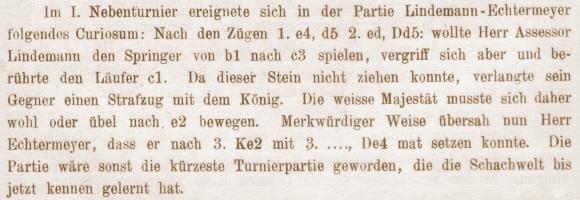
In short, three options have been evoked: that Black i) gave mate with 3...Qe4, ii) sadistically eschewed 3...Qe4, and iii) overlooked 3...Qe4.
The crosstable (showing that Echtermeyer did indeed defeat Lindemann) was given on page 10 of the tournament book, and the following page (as well as the above-quoted item in the Deutsche Schachzeitung) stated that the players were from Kiel and Oldesloe respectively.
Graham Clayton (South Windsor, NSW, Australia) writes:
‘Stephen Solomon has won the 2007-08 Australian championship (Parramatta, 2-11 January 2008) at the age of 45, this being the 14th time that he has participated in the biennial championship. He made his début in the 1981-82 event.
This raises a couple of questions:
a) What is the largest number of times a player has participated in his national championship tournament before winning the title?
b) What is the oldest age at which a player has won his national championship for the first time?’
Frank Camaratta (Toney, AL, USA) provides this label from the box of the Bird chessmen:
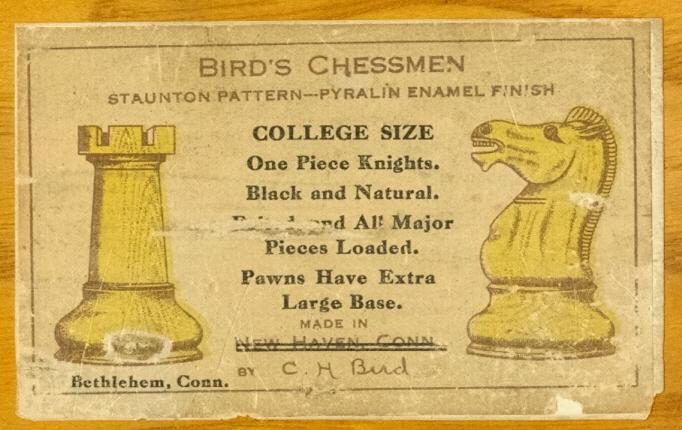
Our correspondent also draws attention to the front cover of Bird’s book Chess Novelties (London and New York, 1895):
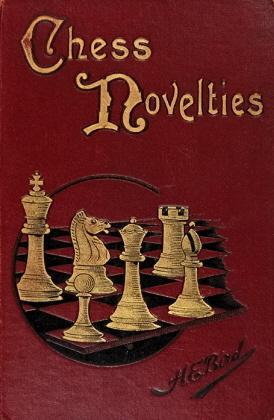
Finally, Mr Camaratta refers to the ‘uncanny resemblance’ between the Bird chessmen and the pieces shown in an advertisement issued by Will H. Lyons:
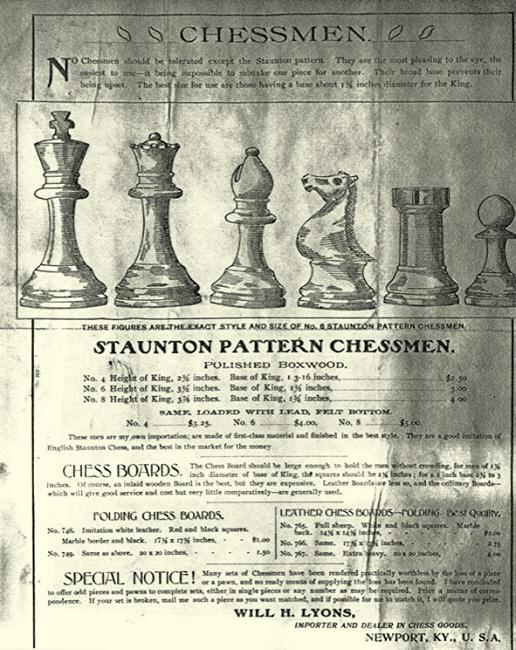
‘In which year was moving the king as a penalty for an illegal move eliminated?’
We propose to revert to this question shortly with some quotes and other jottings – unless readers are able to point out any existing articles which already cover the topic.
Which chess author also wrote a book on poodles? The answer is provided at the end of the present item, but we start with an extract from page 68 of Wonders and Curiosities of Chess by Irving Chernev (New York, 1974):
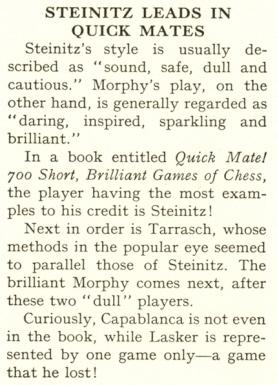
The book in question was Schnell Matt! by Claudius Hüther and Ludwig Bachmann (Leipzig, 1924). It was indeed imbalanced in the manner indicated by Chernev (although Lasker was represented not by one game but by four – a win and three losses).
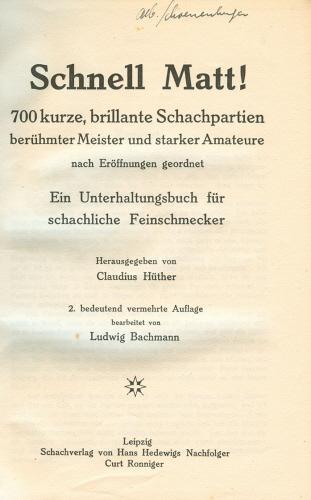
The first edition of Schnell Matt! (Munich, 1913) had been by Hüther alone, a self-publication featuring 333 games (also without notes). Biographical information about him is lacking, although on page xii an address was given: Schleißheimerstr. 49, Munich. Bachmann, in his Vorwort to the 1924 edition (page 3), mentioned that Hüther was no longer alive, and further details are being sought now. Can readers assist?
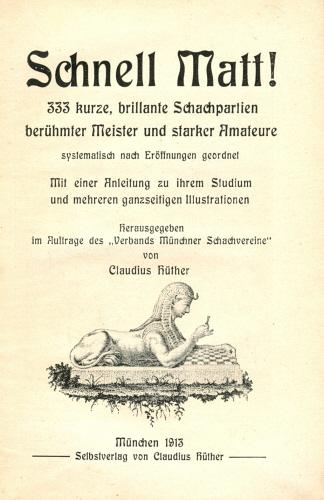
As shown by a full-page advertisement on the final page of the 1913 book, Hüther was also the author and publisher of Der deutsche Pudel (Munich, 1907).
Peter van Hooren (Kortenhoef, the Netherlands) reports that Léonardus Nardus has been fully exposed as an art swindler in an article ‘Gross False Pretences’ by Jonathan Lopez in the December 2007 issue of Apollo (accessible online after simple registration).
The article’s heading reads:
‘Several of the greatest collectors of Old Master paintings in turn-of-the-century America were sold fakes or wildly misattributed works by Leo Nardus. Drawing on newly discovered documents, Jonathan Lopez explains how Nardus was exposed and discusses the impact of his chicanery on the art market.’
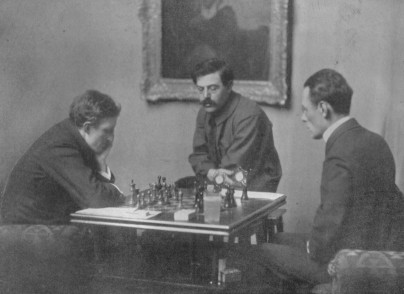
F.J. Marshall, L. Nardus and D. Janowsky
To quote one brief passage from the highly interesting account:
‘Nardus is seldom mentioned in the annals of art history, although, from his arrival in New York in 1894 until his downfall in 1908, he was an extremely active and successful dealer in the United States. Fluent in four languages, a champion swordsman and an internationally known chess master, Nardus was a highly charismatic individual, and he used his charm to devastating effect in his business dealings.’
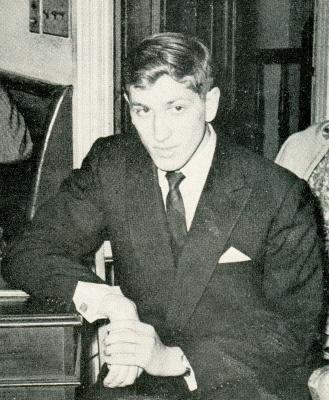
As recorded in the Factfinder, Bobby Fischer has been featured in many C.N. items over the years. These include various unresolved matters which we have now drawn together in an article for ChessBase.
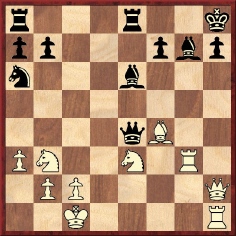
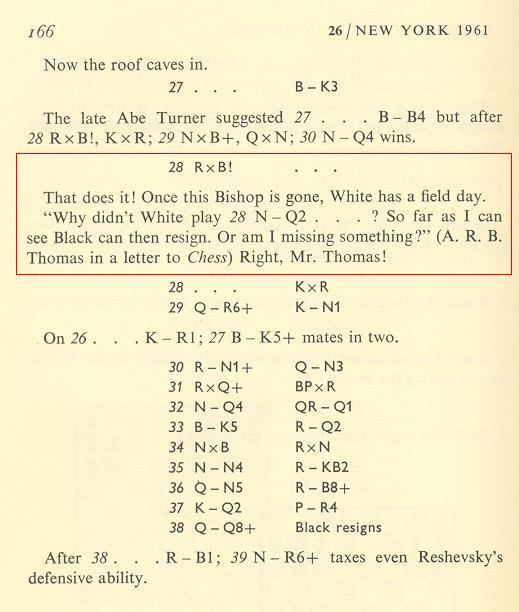
From Fischer’s My 60 Memorable Games (1969)
David DeLucia (Darien, CT, USA) informs us that on page 163 of the 1967 review copy of Fischer’s Memorable Games book (containing only 52 games – see C.N. 5352) the note at move 28 in his game against Reshevsky, New York, 1961 merely read:
‘That does it! Once this Bishop is gone, White has a field day.’
Thus the reference to A.R.B. Thomas was added subsequently, at which time the concomitant need to remove the exclamation mark appended to 28 RxB may have been overlooked. Fischer’s ‘Right, Mr Thomas!’ observation would therefore be not sarcasm but acceptance of correction.
Alasdair Alexander (Dunfermline, Scotland) writes:
‘A recent example which outdoes Stephen Solomon is Andrew Muir (born 1958), who won the Scottish championship for the first time in 2007 at the 18th attempt, 31 years after his first attempt. Source: Scottish Chess, October 2007, page 16.’
From Marko Ylijoki (Jyvaskyla, Finland):
‘The Finnish chess master Anatol Tschepurnoff won the first Finnish chess championship in 1922 at the age of 50. Ilmari Niemela participated 21 times and won only once – in 1948, which was the first time he took part.’
C.N. 4492 referred to Reuben Fine’s participation in a 50-board simultaneous display given by Capablanca against consulting groups at the Drill Hall of the Seventh Regiment Armory, New York on 12 February 1931, and now Tony Bronzin (Newark, DE, USA) raises the subject of Fine’s account on pages 3-6 of Lessons from My Games (New York, 1958). Fine headed the game as follows:

Our correspondent comments:
‘However, in the February 1988 Chess Life (pages 12-13) Arnold Denker, when recounting the life of an American chessplayer of the 1930s, Donald MacMurray, wrote:
“The great Cuban seemed to start out well in the game, but Mac and a young Reuben Fine showed some fine endgame technique. Defeating Capablanca was always a notable feat.’
My question is: did Fine exploit his two bishops and better king himself to win the game, or was it a collaborative effort from start to finish?’
We begin by noting that Fine’s coverage of the game had
previously appeared in his series of articles ‘My Best Games of
Chess’ on pages 296-297 of the October 1955 Chess Review.
The game-score was given on page 56 of the March 1931 American
Chess Bulletin, where the allies were named as ‘R. Fine,
D. MacMurray, E. Schwartz and L.W. Stephens’. Page 50 had the
same information. The display lasted nearly eight and a half
hours, the final move being made ‘within a minute or two of
midnight’ (page 45). Did newspapers of the time give further
details of the game under discussion here?
The Bulletin published four photographs of Capablanca at other boards:
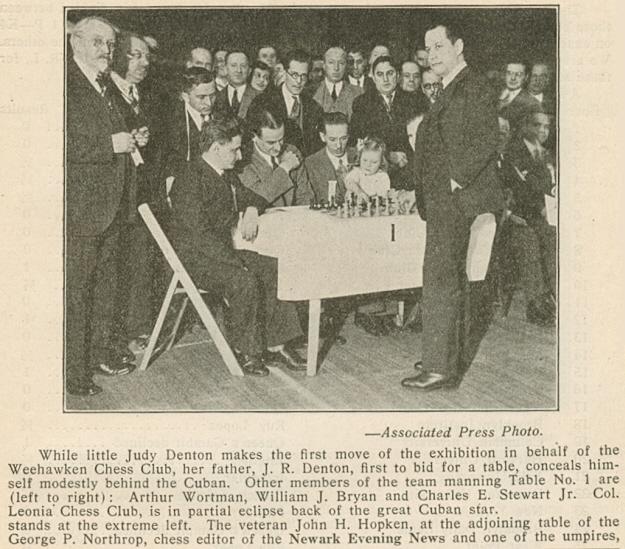
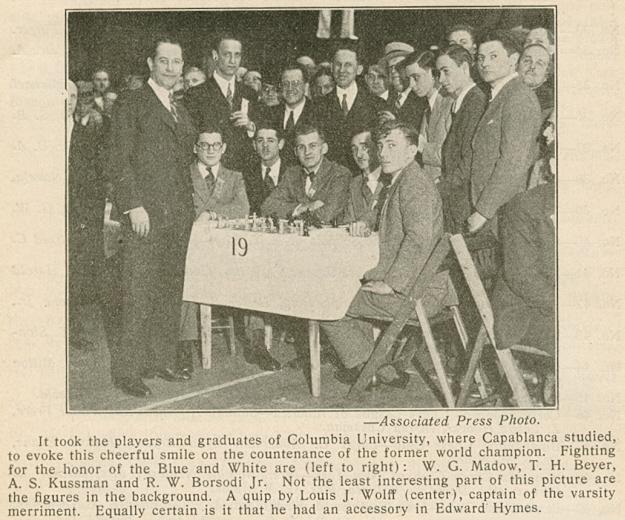
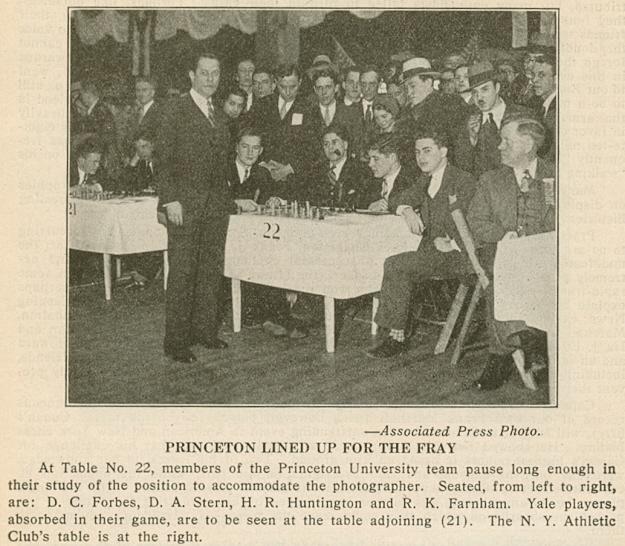

The Chess Bouquet by F.R. Gittins (London, 1897) is an invaluable, richly-illustrated compendium on British problem composers, but we lack information about the later years of Gittins himself, including a date of death.
As a possible clue it may be noted that, perhaps surprisingly, he had an entry in the ‘Adressen von bekannteren Schachspielern’ in 1920s editions of Ranneforths Schachkalender (e.g. page 144 of the 1925 edition): 8 Everslay [Eversley] Road, Small Heath, Birmingham (England).
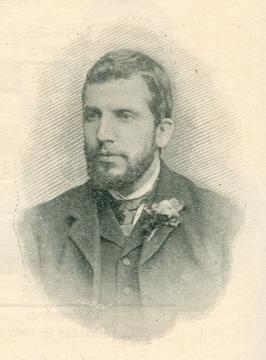
F.R. Gittins (from The Chess Bouquet, page 228)
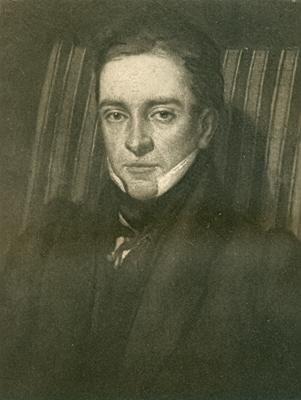
Frontispiece to The Complete
Poetical Works of Thomas Hood (London, 1906)
Thomas Hood (1799-1845) was an eminent literary figure whose interest in chess has seldom been mentioned. We quote some extracts from letters to his brother George which were published in Hood in Scotland: Reminiscences of Thomas Hood, Poet and Humorist collected and arranged by Alexander Elliot (Dundee, 1885):
Pages 109-111: Letter dated circa 7 February 1819:
‘I received your obliging letter per Mr Wyllie, and am grateful to you for the great pleasure which it afforded me.
I promised Mr W. to call on him and try his strength at chess, which I have yet been unable to do, for Christmas brought me no vacation ...’
Later in the same letter:
‘Since writing the above I have had the pleasure of seeing Mr Wyllie, who called to inquire the reason of my not seeing him, and I have returned his visit, and have, moreover, engaged him at chess, gaining five battles out of six. But one trial, of course, is not sufficient to determine the mastery. I must confess that I was afraid my want of practice would have served me worse, but, after leaving your country unconquered, I was resolved not to be beaten by your countryman on my own ground if I could help it. I shall now provide myself with a set, which I have hitherto been without for mere want of somebody to play with. It is true that a young lady within a few doors of us desires me to teach her to play at chess, but to learn it requires so much patience that I am not anxious to attempt the task, recollecting that Job was not a woman.’
Page 130: Letter dated 17 June 1821:
‘I see our friend Wyllie as often as possible. We went together to an exhibition of paintings, some time since, and last Thursday he went with me to our Society, where I gave an essay on Poetry to close the session. But chess I must resign, my head is now so much occupied. Methinks I hear you say, what an altered being I must be to give up chess, and that, too, when I have been beaten! But, from the cause just mentioned, I have ceased to find any amusement in it, and therefore there is no hope of retrieving my laurels.’
Page 136: Letter dated 11 October 1821:
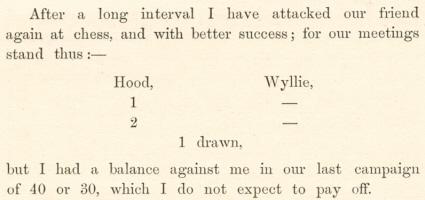
A 12-page report by Zandy Alter and Michael Kapel in The Australia/Israel Review Volume 22 No. 14 (1-22 October 1997) prompted us to write, also in 1997, an article on Karlis Ozols, War Crimes. We summarized the main charges against him: that during the Second World War he commanded a Latvian unit which assisted in the transportation, guarding and execution of Jews.
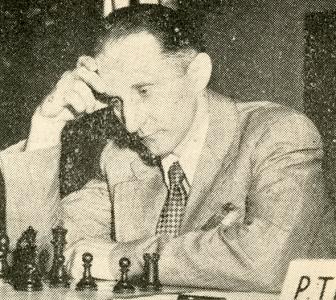
Karlis Ozols
Now Russell Miller (Camas, WA, USA) informs us that the report by Alter and Kapel is available online, at the website of the Australia/Israel & Jewish Affairs Council.
C.N. 593 quoted from page 80 of Lessons from My Games by Reuben Fine (New York, 1958):
‘Both Alekhine and Capa were anxious to see Euwe do badly. I was rather amused when a most critical situation arose in my game with Euwe and both the ex-world champions whispered suggestions in my ear.’
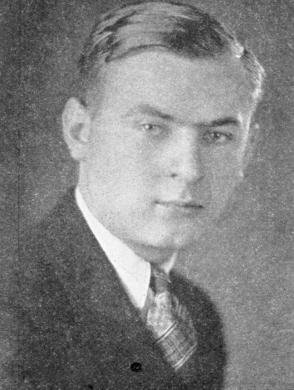
Reuben Fine
Fine reiterated that claim about the game (a 19-move draw) on page 33 of his book Bobby Fischer’s Conquest of the World’s Chess Championship (New York, 1973):
‘... at the Nottingham tournament in 1936, when I was playing Euwe, then world champion after his defeat of Alekhine in 1935, both Alekhine and Capablanca spontaneously came up to me during the game to suggest moves, even though I had not asked them to do so.’
Etienne Cornil (Brussels) has made available online a 420-page document tracing every Belgian championship from 1901 to 2007.
Reverting to his Cahier on the Café de la Régence (referred to in C.N. 5241 and available through the above link to the Cercle Royal des Echecs de Bruxelles), Mr Cornil also mentions to us that pages 33-39 discuss the Staunton v Saint-Amant picture and offer a slightly different key from the one proposed by a correspondent in C.N. 4259.
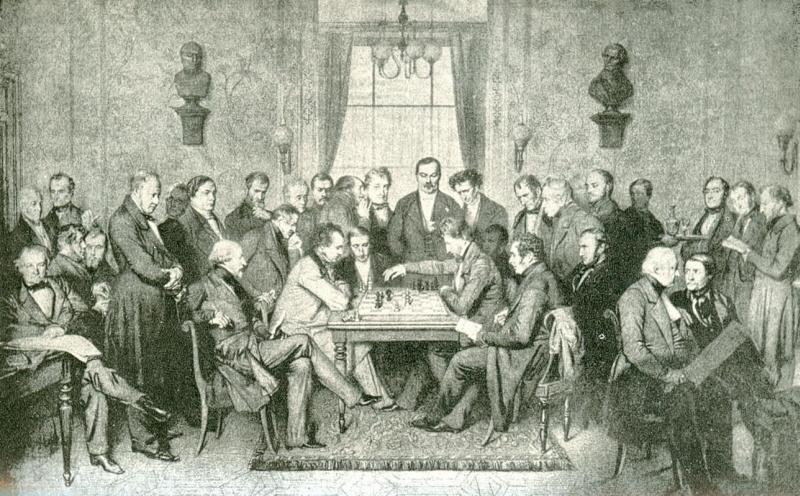
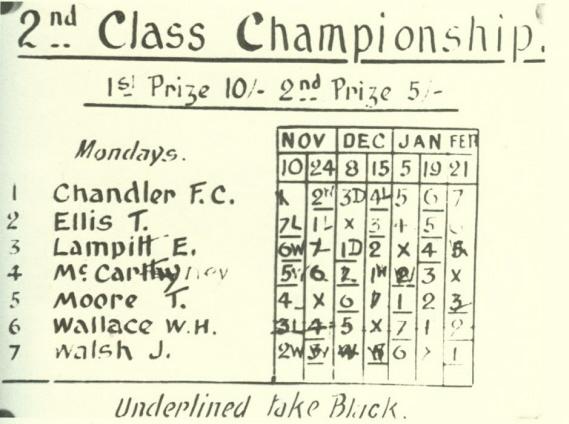
The above pairing table may be considered one of the most noteworthy of all chess documents. An explanation will be provided shortly.
Hong-Quang Vo (Arcueil, France) writes:
‘I am surprised not to have found a French edition of Znosko-Borovsky’s book The Middle Game in Chess. I assume that the original text was written in Russian, but can you confirm that is correct?’
No French edition would appear to have been published. Douglas A. Betts’ Annotated Bibliography (page 228) specified, regarding the first edition (London, 1922), ‘translation from the French revised by P.W. Sergeant’, although we see no reference to French in the book itself. Znosko-Borovsky’s Preface on pages vii-x thanked the publisher, G. Bell and Sons, for taking an interest in the work of ‘a foreign chessplayer living in exile’ and stated:
‘While writing my book I communicated the various parts of it to that fine Russian chess master, Dr O.S. Bernstein, who was very much interested in it and urged me to continue it. The translation has been revised by Mr P.W. Sergeant.’
In 1938 Bell brought out a new edition, altogether different, translated by Julius du Mont:
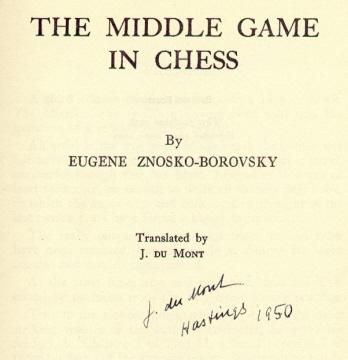
Znosko-Borovsky, incidentally, appears to have settled in France in 1920. From page 130 of the June 1920 issue of La Stratégie:
‘Nous avons eu la visite du maître russe Eugène Snosko-Borowski. Il compte, dit-il, se fixer définitivement à Paris, dès son retour de Gothebourg où il va prendre part au Congrès-Jubilé de la Société d’Echecs de cette ville.’ [He did not, in fact, take part in the Göteborg tournament.]
Harrie Grondijs (Rijswijk, the Netherlands) mentions that pages 58-62 of his book Unforgotten Chess Men, published in 2005, discuss Keidanz, with particular regard to his composition work. He also draws attention to references to Keidanz on pages 79 and 86 of Wolfgang Pauly by Marian Stere (Bucharest, 2001).
Regarding the game Capablanca (simultaneous) v N.N., Moscow, 1935, in C.N. 5343 a correspondent offered a ‘tentative reconstruction’ of the missing first phase: 1 d4 d5 2 c4 e6 3 Nc3 Nf6 4 Bg5 Be7 5 e3 O-O 6 Nf3 Nbd7 7 Qc2 c6 8 Rd1 h6 9 Bh4 a6 10 a3 b5 11 c5 Re8 12 b4 Ng4 13 Bxe7 Qxe7 14 Bd3 e5 15 dxe5 Ndxe5 16 Nxe5 Qxe5 17 h3.
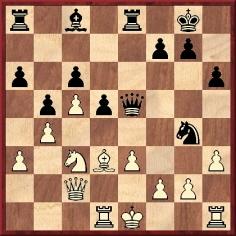
Now Hans-Georg Kleinhenz (Munich, Germany) points out that the ChessBase Megabase 2007 contains a game (Oystein Hole v Bjarte Leer Salvesen, Gausdal, 2003) which reached the diagrammed position as follows: 1 d4 e6 2 c4 d5 3 Nf3 c6 4 Qc2 Nf6 5 Bg5 h6 6 Bh4 Nbd7 7 e3 Be7 8 Nc3 O-O 9 Rd1 Re8 10 a3 a6 11 Bd3 b5 12 c5 e5 13 dxe5 Ng4 14 Bxe7 Qxe7 15 b4 Ndxe5 16 Nxe5 Qxe5 17 h3.
James Plaskett (Cartagena, Spain) sends the following game-score (from a tournament in which each player had 25 minutes per game, plus ten seconds per move) and asks whether the mating finish has occurred in other games:
James Plaskett – José Clement Gómez
Beniel, 19 August 2007
Sicilian Defence
1 e4 c5 2 Nf3 Nc6 3 d4 cxd4 4 Nxd4 Nf6 5 Nc3 d6 6 Bg5 e6 7 Qd2 a6 8 O-O-O Bd7 9 f4 h6 10 Bh4 Be7 11 Nf3 Qc7 12 e5 dxe5 13 fxe5 Ng8 14 Ne4 Bxh4 15 Nxh4 Nxe5 16 Nd6+ Kf8 17 Qf4 f6
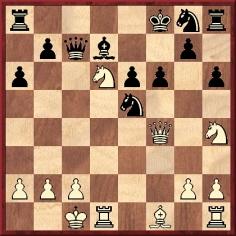
18 Qxe5 Resigns.
From Maurice Carter (Fairborn, OH, USA):
‘What was the policy during tournaments (prior to the Second World War) concerning the players’ original score-sheets? Was there a general rule or practice whereby they were considered the property of the relevant chess federation, sponsor or tournament committee? Did any notable tournaments have their own particular regulations regarding ownership of score-sheets?’
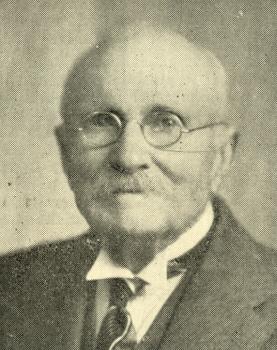
Who was this chessplayer, an opponent of Adolf Anderssen? Clue: the photograph was taken in 1950.
From Joost van Winsen (Silvolde, the Netherlands):
‘Major H. Wernich was one of the better players in New York in the late 1860s and the 1870s. For instance, he had some success in the fourth Café Europa tournament of 1869, finishing sixth behind George H. Mackenzie, James Mason, Paul von Frankenberg, Francis E. Brenzinger and Eugene Delmar. The following game, published in the Round Table, 3 July 1869, was kindly provided to me by John Hilbert:
H. Wernich – George Henry Mackenzie
New York, June 1869
Giuoco Piano1 e4 e5 2 Nf3 Nc6 3 Bc4 Bc5 4 c3 Nf6 5 d4 exd4 6 cxd4 Bb4+ 7 Bd2 Bxd2+ 8 Nbxd2 d5 9 exd5 Nxd5 10 O-O O-O 11 h3 Be6 12 Ne4 h6 13 Nc5 b6 14 Nxe6 fxe6 15 Re1 Qf6 16 Bxd5 exd5 17 Qd2 Rae8 18 Re3 Re4 19 Rd1 Rf4 20 a3 Qg6 21 Qd3 Qh5 22 b4 a6 23 Rc1 R8f6 24 Rc2 Qg6 25 Qxg6 Rxg6 26 Ne5 Nxe5 27 dxe5
27...d4 28 Rd3 c6 29 Kh2 Re4 30 f3 Rxe5 31 Rxd4 a5 32 Rdc4 axb4 33 axb4 Rb5 34 g4 Rgg5 35 h4 Rgd5 36 Kg3 c5 37 bxc5 Rdxc5 38 Rxc5 bxc5 39 Rc4 Kf7 40 Kf4 Rb4 41 Rxb4 cxb4 42 Ke3 g5 43 hxg5 hxg5 44 Kd3 Ke6 45 Kd4 b3 46 Kc3 Ke5 47 Kxb3 Kf4 48 Kc3 Kxf3 49 Kd3 Kxg4 50 Ke4 Kg3 and wins.
In 1876 Wernich participated in the Clipper Free Centennial Tournament, and again he finished sixth, against opposition which included Henry E. Bird, Eugene Delmar, Albert W. Ensor and the tournament winner, James Mason. Wernich’s loss to Mason appeared in the New York Clipper of 21 October 1876:
H. Wernich – James Mason
New York, October 1876
Petroff Defence1 e4 e5 2 Nf3 Nf6 3 d4 exd4 4 e5 Ne4 5 Qxd4 Nc5 6 Bc4 Nc6 7 Qd5 Ne6 8 O-O Be7 9 Nc3 b6 10 Ne4 Bb7 11 Qd1 Nxe5 12 Nxe5 Bxe4 13 Re1 Bb7 14 c3 Bf6 15 Bf4 Bxe5 16 Bxe5 Qg5 17 Bg3 a6 18 Bb3
18...O-O 19 Qxd7 Rad8 20 Qa4 Rd2 21 Rab1 Qg6 22 Qh4 Ng5 23 Bc4 Qc6 24 Bf1 Nf3+ 25 gxf3 Qxf3 and wins.
The Turf, Field and Farm of 7 March 1879 published, three weeks after Wernich’s death, the following report:
“The well-known veteran player Major H. Wernich, who for so many years has been so well known and such a favorite at the various chess resorts of this city and Brooklyn, died in the latter city on 15 February. Major Wernich in early life was a gallant and meritorious officer of artillery in the Prussian service, and served with distinction in several campaigns; in 1848, unfortunately becoming suspected of some political offense, he was hastily and unjustly tried, convicted and sentenced to death. He escaped, however, by the intercession of his friends with the then reigning king, Frederick William IV, the brother of the present Emperor. It is said that the Major owed his pardon to the fact that it was presented for signature to the King, who was called ‘King Cliquot’, because of his fondness for that particular brand of Champagne, at an opportune and most convivial moment; however it was obtained, he was pardoned, and afterward he came to this country. As a chessplayer Major Wernich ranked far above the average, and few indeed are the amateurs who can boast that they have worsted him over the board. For a long time Major Wernich was a valued member of the Philidor Chess Club of Brooklyn, the members of which, in common with every chessplayer of this city, will mourn their loss occasioned by the sad event which we chronicle.”
The year 1848 saw many revolutions in Europe, as well as in Prussia. A search of the Schachzeitung der Berliner Schachgesellschaft and the early years of the Deutsche Schachzeitung produced only one item on Wernich: the June/July 1851 issue of the former publication (pages 253-256) offered brief information on Lieutenant Wernich, then out of service. He had moved from Stettin (where he often played with von der Goltz) to Magdeburg. The correspondent, Max Lange, also contributed a game played by him (as White) against Wernich, a Scotch Game won by Lange after 27 moves.
Can anybody provide more information about Wernich’s German or Prussian past?’
| First column | << previous | Archives [42] | next >> | Current column |
Copyright: Edward Winter. All rights reserved.